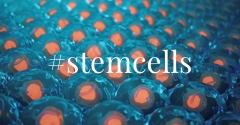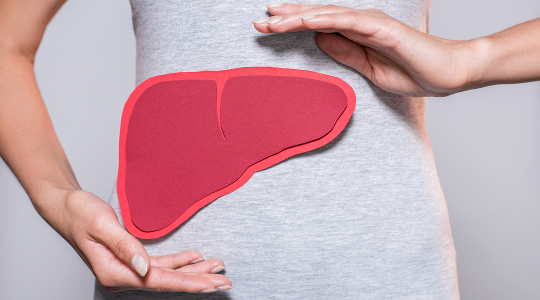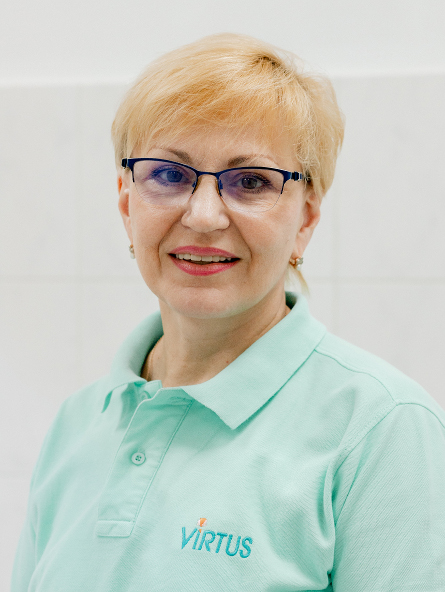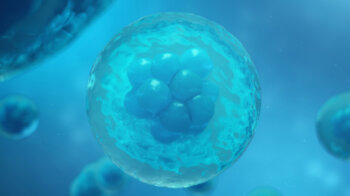Among the causes of the development of this disease are:
- unfavorable course of chronic hepatitis,
- biliary and blood outflow obstruction from liver,
- genetically mediated metabolic defects.
Liver cirrhosis manifests in various symptoms depending on etiology, stage of the disease and strength of the process. Such symptoms as: enlarged liver, nasal hemorrhage, temperature rise, skin itch, early saturation with food and the feeling of fullness, bloody vomit, sense of pain in the upper stomach, loss of weight, performance decrement and many others are present in most patients. In about 20% of patients the disease course is asymptomatic and can be diagnosed via autopsy when treating another gastroenterological disease.
Malfunction of such a vital organ as liver affects the whole organism life activity. There are signs of thinking and memory impairment, performance decrement, cardiovascular disorders, intimate life problems, gastric and duodenal ulcer as well as oncology diseases.
Cell therapy for cirrhosis
HepaCELLNESS® is a cellular liver tissue regeneration program that combines intravenous therapy, local cell administration, immunomodulation, and antifibrotic action to stop liver destruction and restore its function.
In cirrhosis of the liver, liver tissue is gradually replaced by connective tissue, which affects liver function. In the final stage of chronic damage, nodules form that disrupt the architecture of the organ. Cirrhosis develops due to viral hepatitis, alcohol abuse, and genetic characteristics. In the early stages, this disease may be asymptomatic, but over time, patients experience the following symptoms of liver cirrhosis:
- enlargement of the liver and abdomen;
- nosebleeds;
- constant fatigue and weakness;
- itching of the skin;
- yellowing of the skin and whites of the eyes;
- decreased appetite, feeling of fullness;
- nausea and vomiting, possibly with blood;
- pain in the upper abdomen;
- weight loss.
Since the main functions of the liver include the elimination of toxins, cleansing the body, and regulating the levels of fats, amino acids, and glucose in the blood, disruption of its functioning affects the entire body. Therefore, with cirrhosis, cognitive functions, memory (hepatic encephalopathy), performance and overall quality of life suffer. There are risks from the cardiovascular and digestive systems, and the likelihood of developing oncological pathologies increases.
If standard drug treatment seems to slow down the development of liver cirrhosis and alleviate the course of the disease, then cell therapy helps restore liver tissue. Mesenchymal stem cells replace damaged liver cells and promote its functioning.
Benefits of Cell Therapy for Cirrhosis
The HepaCELLNESS® program, developed by the Smart Cell laboratory for the treatment of liver diseases (including not only cirrhosis, but also fibrosis and amyloidosis), provides an individual comprehensive approach to each patient. It includes intravenous administration of MSCs, which has a systemic effect: reduces inflammation and stimulates hepatocyte regeneration, as well as local administration of stem cells to the liver area for targeted regeneration in severe cases. Thus, cell therapy, which helps stop liver cirrhosis, consists of the following stages:
- Consultation with a Smart Cell doctor.
- Examination: ultrasound, elastography of the liver, blood tests.
- Plasmapheresis (if necessary).
- Collection and preparation of MSCs.
- Administration of MSCs: intravenous and local.
- Dynamic monitoring of the condition: tests, ultrasound/elastography.
- Repeated courses of MSCs as necessary.
Thus, today transplantation is not the only way to treat liver cirrhosis. Cell therapy in our practice shows excellent results and improves the quality of life of patients.












 3771
3771  7 min.
7 min.







